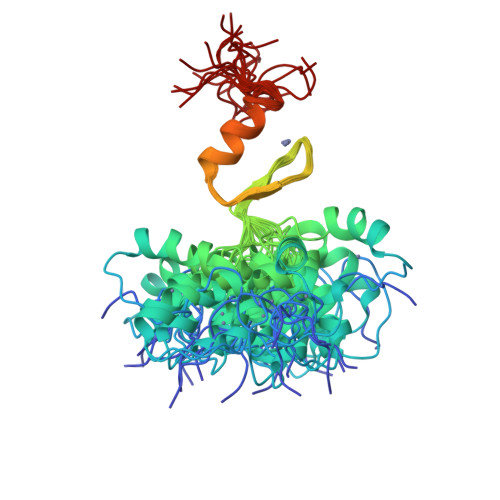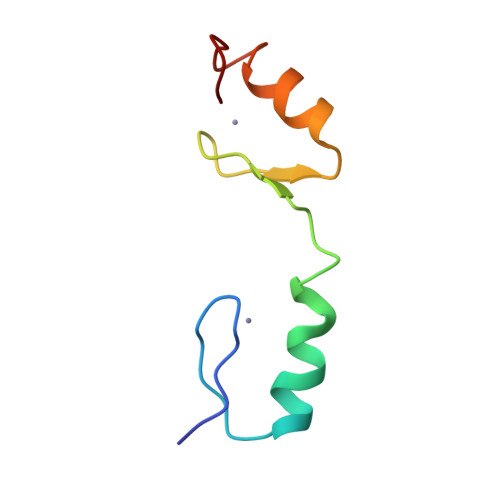A folding transition and novel zinc finger accessory domain in the transcription factor ADR1.
Bowers, P.M., Schaufler, L.E., Klevit, R.E.(1999) Nat Struct Biol 6: 478-485
- PubMed: 10331877
- DOI: https://doi.org/10.1038/8283
- Primary Citation of Related Structures:
2ADR - PubMed Abstract:
The region responsible for sequence-specific DNA binding by the transcription factor ADR1 contains two Cys2-His2 zinc fingers and an additional N-terminal proximal accessory region (PAR). The N-terminal (non-finger) PAR is unstructured in the absence of DNA and undergoes a folding transition on binding the DNA transcription target site. We have used a set of HN-HN NOEs derived from a perdeuterated protein-DNA complex to describe the fold of ADR1 bound to the UAS1 binding site. The PAR forms a compact domain consisting of three antiparallel strands that contact A-T base pairs in the major groove. The three-strand domain is a novel fold among all known DNA-binding proteins. The PAR shares sequence homology with the N-terminal regions of other zinc finger proteins, suggesting that it represents a new DNA-binding module that extends the binding repertoire of zinc finger proteins.
Organizational Affiliation:
Department of Biochemistry, University of Washington, Seattle 98195-7742, USA.

















